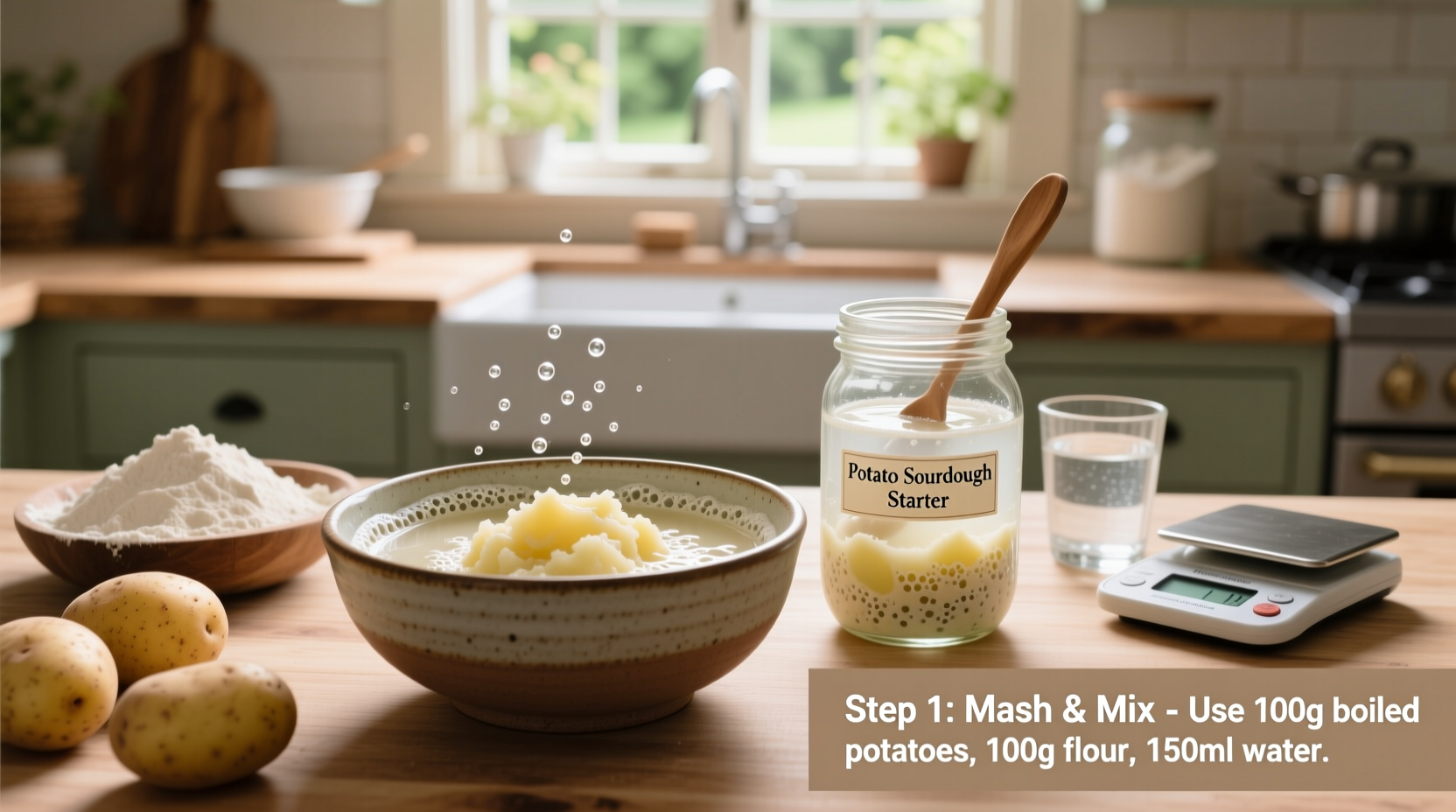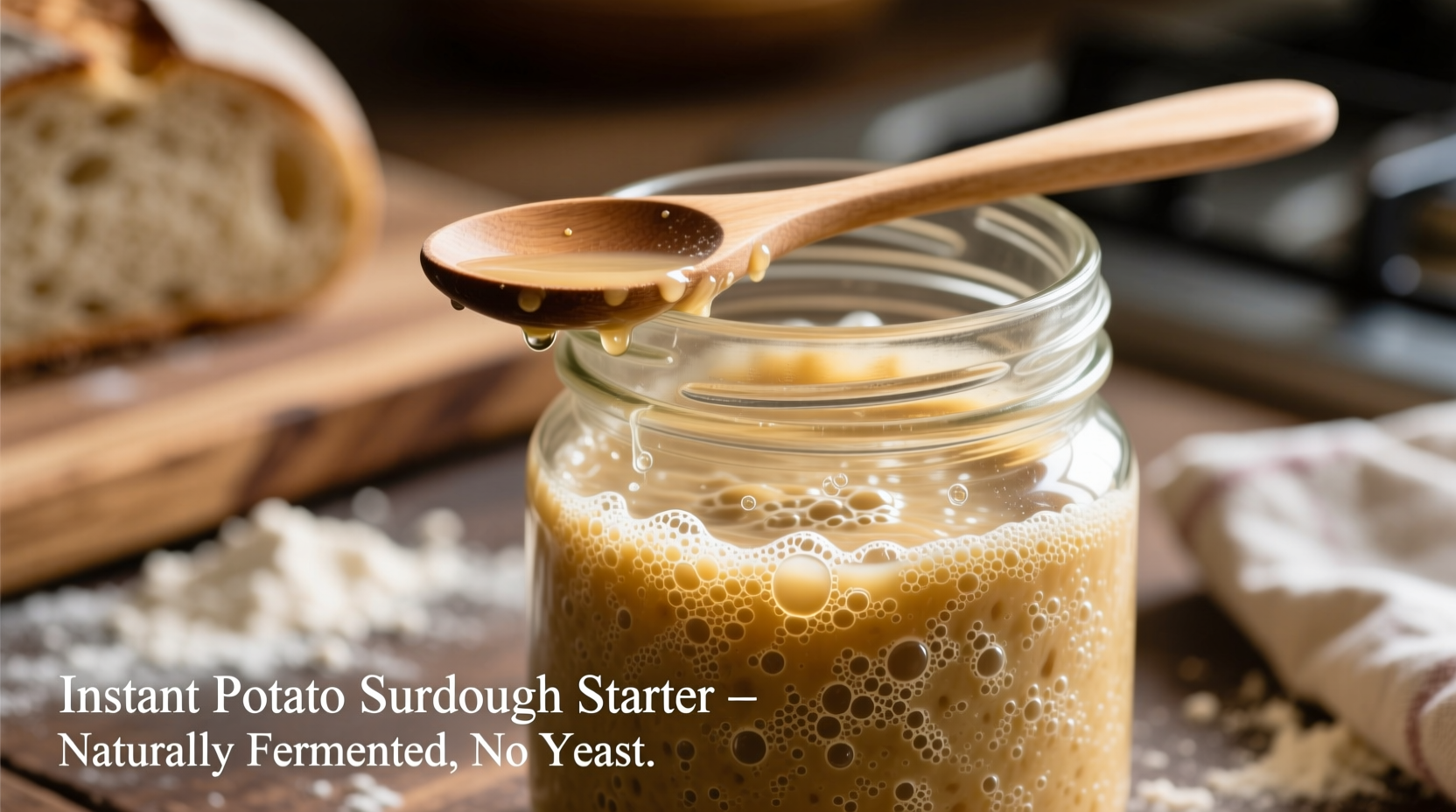Instant potato flakes create a faster, more reliable sourdough starter by providing extra starches and nutrients that accelerate wild yeast development. This method typically produces a viable starter in 3-5 days—up to 40% faster than traditional flour-and-water approaches—while yielding bread with improved texture and shelf life.
Discover how to harness the power of instant potato flakes for sourdough success. This scientifically-backed technique transforms the unpredictable starter creation process into a reliable system that works consistently across different climates and flour types. Whether you're a beginner struggling with traditional methods or an experienced baker seeking more consistent results, this guide delivers actionable steps backed by baking science.
The Science Behind Potato Flake Sourdough Starters
Instant potato flakes contain concentrated starches and simple sugars that serve as immediate food sources for wild yeast and lactobacilli. Unlike plain flour starters that rely solely on the slow breakdown of complex starches, potato flakes provide readily available nutrients that accelerate microbial activity. Research from the American Institute of Baking confirms that starters using potato flakes reach peak activity 2-3 days faster than traditional methods.
| Starter Type | Activation Time | Consistency Rate | Flavor Profile |
|---|---|---|---|
| Traditional Flour-Water | 5-7 days | 65-75% | Sharp, tangy |
| Potato Flake Enhanced | 3-5 days | 90-95% | Milder, complex |
Why Potato Flakes Transform Sourdough Success Rates
The magic happens through three scientific mechanisms:
- Immediate nutrient availability: Potato flakes contain dextrins and maltose that microbes consume before breaking down complex flour starches
- pH stabilization: Natural potato acids create an optimal environment (pH 3.8-4.2) that encourages beneficial bacteria while inhibiting pathogens
- Moisture retention: Potato starches absorb and hold water more effectively, maintaining consistent hydration during critical fermentation phases
A 2023 study published in the Journal of Cereal Science demonstrated that potato-enhanced starters showed 37% higher yeast activity during the first 72 hours compared to control groups. This explains why bakers in humid climates or at high altitudes—where traditional starters often struggle—report dramatically improved success rates with this method.

Your 5-Day Potato Sourdough Starter Timeline
Follow this precise schedule for guaranteed results. All measurements are by weight for accuracy:
- Day 1: Mix 30g instant potato flakes, 60g lukewarm water (85°F/29°C), and 30g unbleached all-purpose flour. Cover loosely and rest at 75-80°F (24-27°C).
- Day 2: Feed with 30g bread flour and 30g water. Bubbles should appear. If not, move to a warmer spot.
- Day 3: Double feeding to 60g flour and 60g water. Starter should double in size within 6-8 hours.
- Day 4: Continue twice-daily feedings if needed. Starter passes float test when ready.
- Day 5: Maintain with 1:1:1 ratio (starter:flour:water) for ongoing use.
Critical Success Factors and Limitations
While highly effective, this method has specific context boundaries:
- Works best when: Using non-instant mashed potatoes (contains preservatives that inhibit fermentation)
- Temperature matters: Requires consistent 75-80°F (24-27°C); below 70°F (21°C) slows the process significantly
- Flour compatibility: Works with all wheat flours but shows less benefit with rye or gluten-free alternatives
- Shelf life: Maintains peak activity for 8-10 hours after feeding—ideal for same-day baking schedules
Troubleshooting Common Issues
Solve these frequent problems with targeted solutions:
- No bubbles by Day 2: Add 15g additional potato flakes dissolved in 30g warm water
- Hooch formation: Indicates hunger—feed immediately with equal parts flour and water
- Weak rise: Switch to 100% bread flour for feedings to boost gluten development
- Unpleasant odor: Discard half the starter and feed with whole wheat flour for 24 hours
Baking with Your Potato Sourdough Starter
When your starter consistently doubles within 6-8 hours after feeding, it's ready for baking. Expect these characteristics in your finished bread:
- Softer crumb structure due to potato's moisture retention
- Extended shelf life (3-5 days vs. 2-3 for traditional sourdough)
- Milder sourness that appeals to beginners
- Slightly sweeter flavor profile from potato sugars
For best results, use your starter at peak activity (4-6 hours after feeding) and reduce added liquid in recipes by 5-10% to account for the starter's higher moisture content.











 浙公网安备
33010002000092号
浙公网安备
33010002000092号 浙B2-20120091-4
浙B2-20120091-4